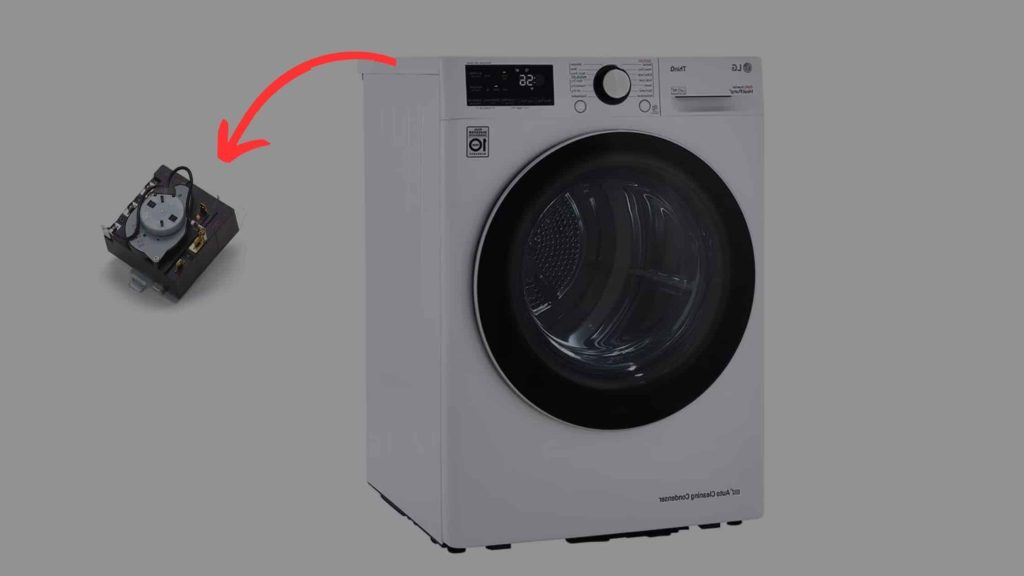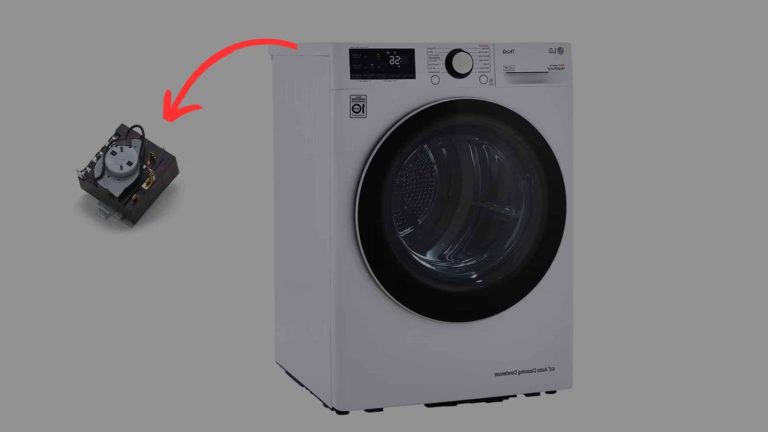Is your dryer acting up and you have a feeling there’s a problem with your timer?
A bad dryer timer often creates a lot of trouble and almost makes your laundry days very dreadful.
Thankfully, there are signs that can help you troubleshoot a bad dryer timer that needs a fix or replacement and we will show you how to easily identify these signs.
Here are 6 symptoms of a bad dryer timer:
- Inconsistent Drying Cycles
- Dryer Runs Continuously
- Dryer Does Not Start
- Timer Does Not Advance
- Unusual Noises
- Burnt Smell
In this article, we’ll explore some of the most common bad dryer timer symptoms, and provide some tips for diagnosing and repairing a bad dryer timer.
Table of Contents

How a dryer timer works
A dryer timer is an essential component of your dryer that controls the duration of the drying cycle.
It is responsible for turning the dryer on and off at specific times, allowing you to set the length of the drying cycle.
The timer consists of a motor that turns a cam, which opens and closes electrical contacts which in turn control the flow of electricity to the dryer’s heating element and motor.
When you set the timer on your dryer, you are essentially setting the amount of time you want the dryer to run.
Once the timer motor begins to turn, the cam rotates, opening and closing the electrical contacts. This process allows the dryer to start and stop at specific intervals, depending on the length of the drying cycle you’ve set.
Common Bad Dryer Timer Symptoms
Here are some common symptoms that you may experience if your dryer timer is bad:
1. Inconsistent drying cycles
One of the most common symptoms of a bad dryer timer is inconsistent drying cycles. If your dryer is not completing a full cycle, it may be due to a faulty timer. This can result in clothes that are still damp or excessively dry. You may also notice that your dryer is taking longer than usual to dry your clothes.
2. Unresponsive controls
Another symptom of a bad dryer timer is unresponsive controls. If you are unable to adjust the settings on your dryer, it could be due to a faulty timer. You may find that the timer is stuck, or that it does not respond when you try to adjust the settings.
3. Dryer runs continuously
If your dryer runs continuously, even after the cycle has finished, it can be a sign of a bad timer. This can lead to increased energy costs and can also cause damage to your clothes.
4. Timer does not advance
If your dryer timer does not advance, it can be a sign of a faulty timer. This can result in clothes that are not fully dried or excessively dried. You may also notice that the timer is stuck in one position and does not move.
5. Dryer does not start
If your dryer does not start at all, it could be due to a bad timer. This can be caused by a malfunctioning timer motor or a broken timer knob.
6. Burnt smell
If you notice a burnt smell coming from your dryer, it could be due to a bad timer. This can be caused by a malfunctioning timer motor that is overheating.
How to diagnose a bad dryer timer
If you suspect that your dryer timer is not working correctly, there are a few steps you can take to diagnose the problem.
Visual Inspection
The first step in diagnosing a bad dryer timer is to conduct a visual inspection of the timer. Here are some things to look for:
- Burn marks or discoloration on the timer contacts
- Loose or corroded connections
- Signs of wear or damage on the timer knob or dial
If you notice any of these issues, it may indicate that your dryer timer is faulty and attention.
Functional Testing
Another way to diagnose a bad dryer timer is to conduct a functional test. Here are the steps to follow:
- Turn off the power to the dryer by unplugging it or turning off the circuit breaker.
- Open the control panel
- Locate the timer on your dryer’s control panel.
- Use a multimeter to test the timer contacts for continuity. You can consult your dryer’s manual for detailed instructions on how to do this.
- If the timer contacts do not have continuity, this may indicate a faulty timer.
Not all dryer timers can be tested in this way. Some timers are designed to only work when they are connected to the dryer’s heating element or motor.
If you notice any negative issues during these tests, it may indicate that your dryer timer is faulty and needs to be replaced.
How to replace a bad dryer timer
Replacing a dryer timer may require some basic technical knowledge or a proper guide to follow to get it done.
Sears PartsDirect has a step-by-step video that will guide you to properly replace a bad dryer timer.
We have attached it below:
Bad dryer symptoms FAQs
Yes, a faulty timer can prevent the dryer from heating as it controls the heating element’s activation.
To know if your dryer timer needs to be replaced, test the terminals with a multimeter. If it reads between 2000 and 3000 ohms, the timer is likely working properly. If it reads out of range, you should replace the timer.
Related Articles:




My dryer was continuing to run even when the timer was timed out. I replaced the timer with a brand new one. It did not fix the problem. What else could it be?
Hi Barry.
If replacing the timer didn’t fix it, the issue could be a faulty door switch, a stuck motor relay on the control board, or a bad start switch that’s stuck in the ‘on’ position. Also, check for wiring shorts or a stuck centrifugal switch inside the motor. Try opening the door while it’s running—if it doesn’t stop, the door switch might be the culprit. If it runs immediately when plugged in, a stuck relay or wiring issue is likely. Hope this helps!